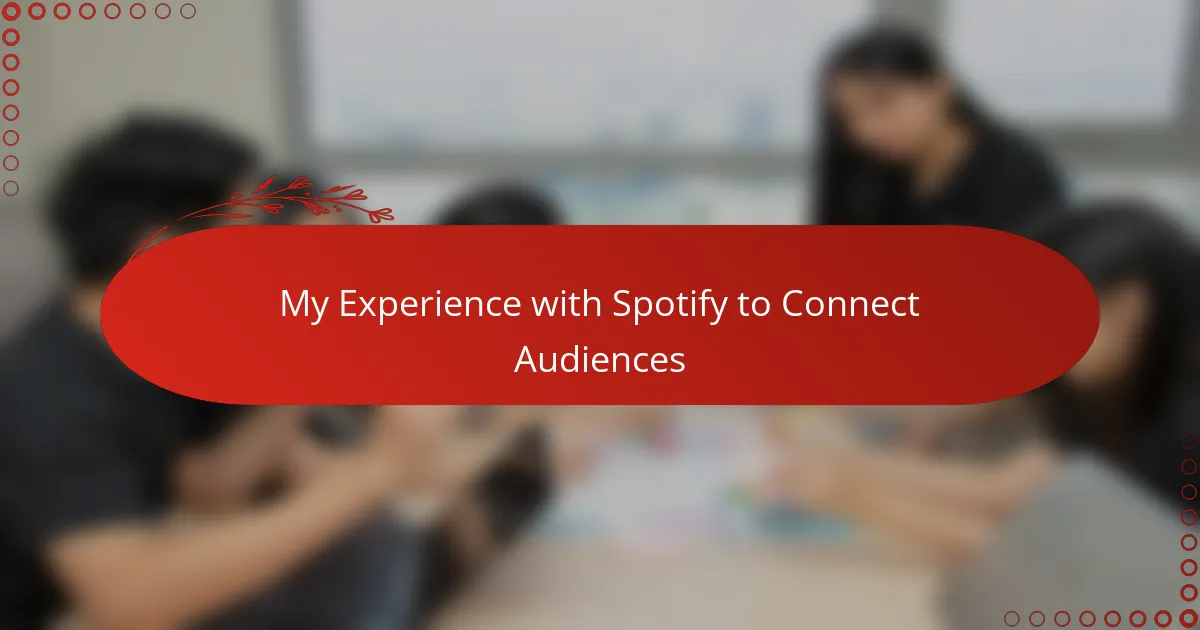Key takeaways
- Radio broadcasting is about creating a personal connection through stories and music, making the experience feel alive and immediate.
- Spotify enhances the radio experience with personalized playlists, interactive features, and real-time analytics, fostering deeper audience engagement.
- Successful broadcasting on Spotify involves curating intentional playlists, blending analytics with creativity, and actively involving the audience in content creation.
- The ease of using Spotify allows broadcasters to focus on storytelling and mood crafting, making it a valuable tool for modern radio.
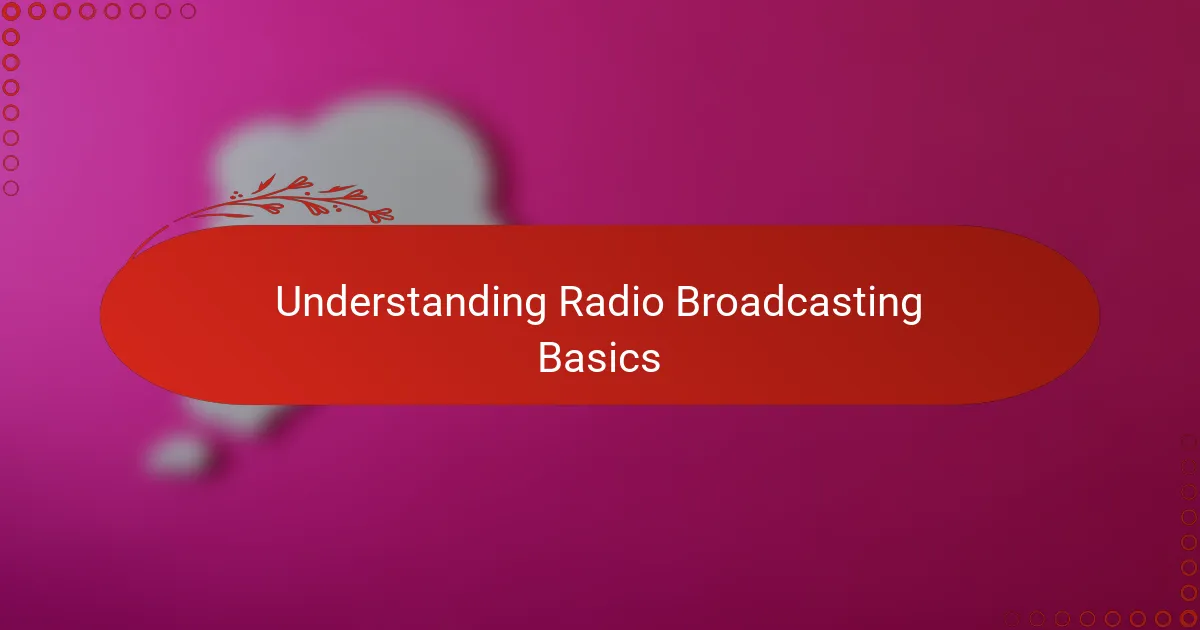
Understanding Radio Broadcasting Basics
Radio broadcasting, at its core, is all about sharing stories, music, and voices through the invisible waves that fill the air around us. I’ve always found it fascinating how a simple transmission can create a sense of connection between people miles apart. Have you ever wondered what makes that signal so powerful and personal?
When I first dove into radio, I learned that it’s a delicate balance of technology and human touch. It’s not just about flipping a switch; it’s about choosing what to say and how to say it to reach an audience’s heart. That blend is what makes radio feel alive and immediate.
Understanding these basics helped me see that radio is more than just sound—it’s community. It’s that shared moment of listening that binds us, whether we’re tuning in during our morning commute or unwinding after a long day. This connection is exactly why radio continues to thrive even in our digital world.
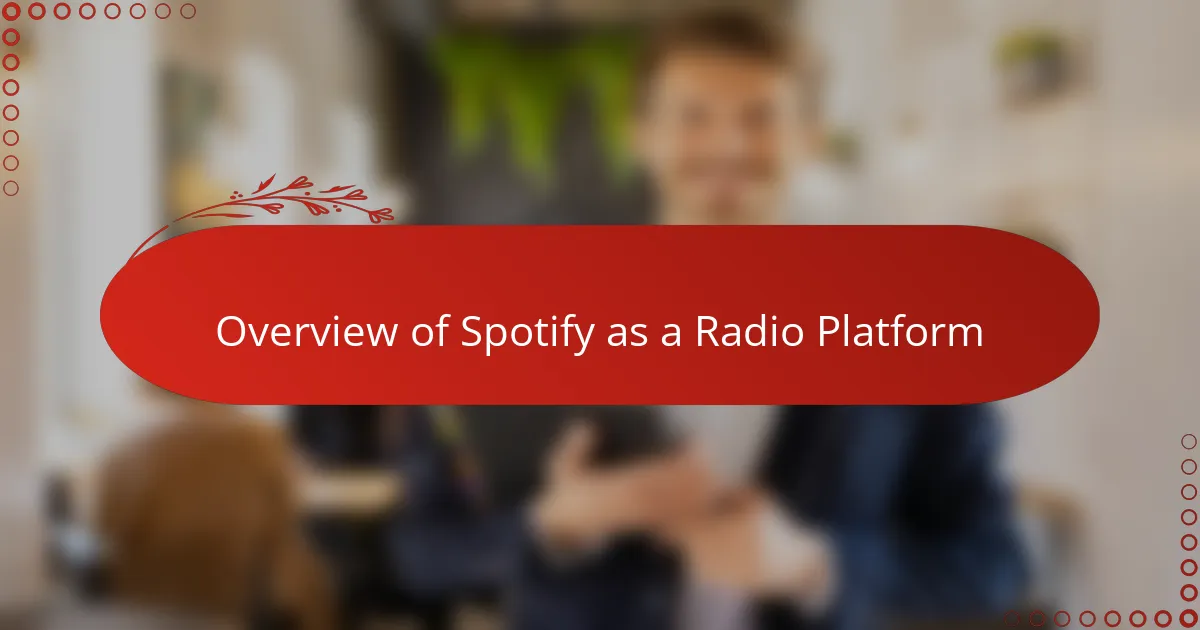
Overview of Spotify as a Radio Platform
Spotify, at first glance, might seem like just another music streaming service. But when I started using it as a radio platform, I realized how it’s reshaping the way we connect with listeners. The personalized playlists and algorithm-driven recommendations create a unique radio experience that feels tailored just for me—and that personal touch is something traditional radio often strives for.
One thing that struck me immediately was how Spotify combines the ease of streaming with that classic radio feel. Instead of waiting for a DJ’s schedule, the music flows seamlessly based on your tastes and moods. Have you ever found yourself discovering an artist you never expected, just because a playlist quietly suggested it? That surprise element brought a new kind of excitement to my broadcasts.
It’s clear to me that Spotify isn’t just a platform; it’s a tool that invites broadcasters to rethink what radio means today. It blends technology with human preferences in a way I hadn’t experienced before, opening doors to a broader, more engaged audience. This dynamic has truly changed how I approach connecting with listeners.
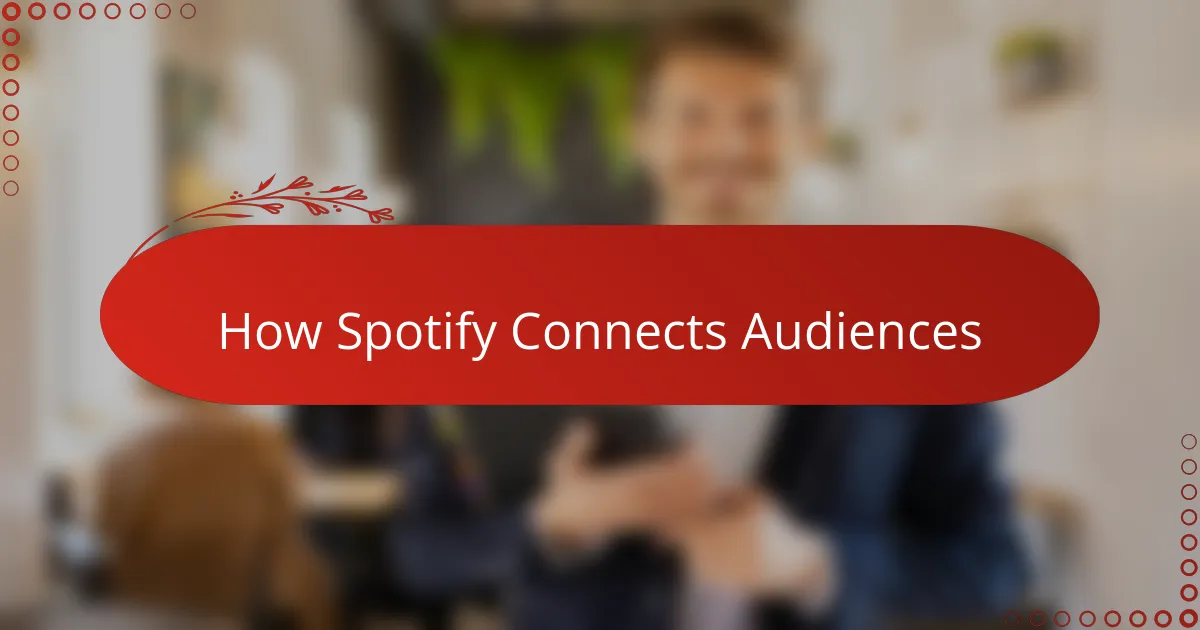
How Spotify Connects Audiences
What really amazes me about Spotify is how it breaks down barriers between listeners from all walks of life. When I see the same playlist popping up on different continents, it hits me—music truly has no borders here. Have you ever thought about how songs become universal languages that connect strangers? Spotify makes this feeling so tangible.
Another aspect I appreciate is the way Spotify’s collaborative playlists spark community involvement. I remember inviting my listeners to add their favorite tracks to a shared list, and suddenly, the broadcast wasn’t just mine—it became ours. That sense of shared ownership changed how I viewed audience engagement entirely.
On a practical level, Spotify’s real-time analytics give an insightful glimpse into who’s tuning in and what they love. This feedback loop feels like a conversation rather than a one-sided broadcast. It’s powerful knowing that I can adjust my content to better suit my audience’s vibe, making every session feel more intimate and connected.
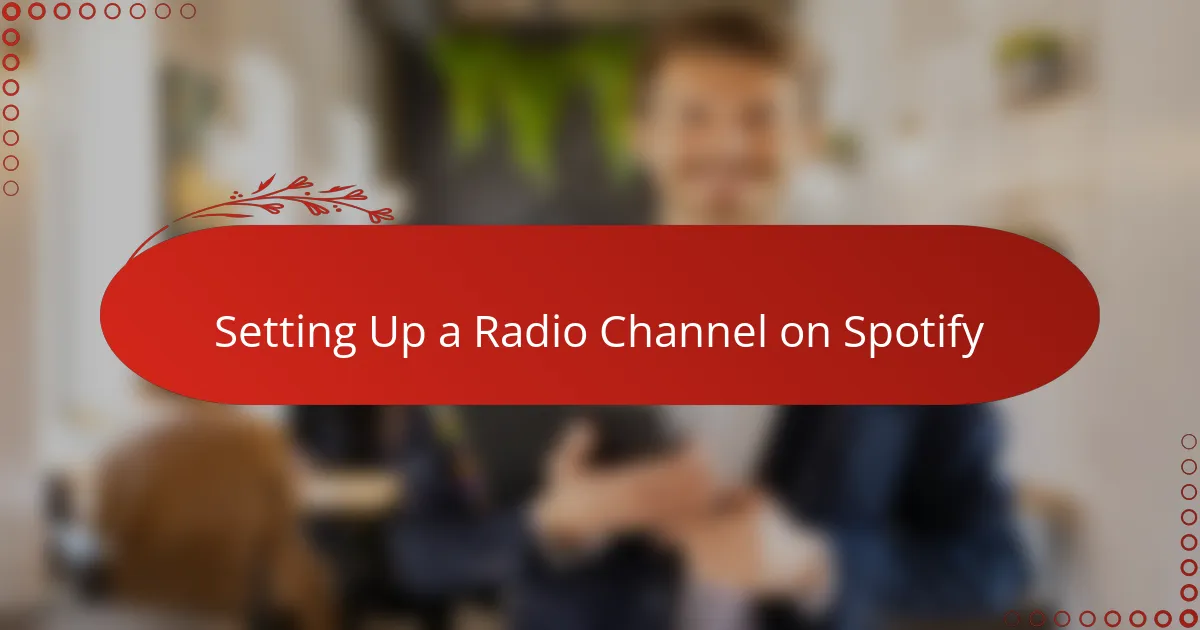
Setting Up a Radio Channel on Spotify
Setting up a radio channel on Spotify felt surprisingly straightforward at first. I remember starting by creating a dedicated playlist tailored to the vibe I wanted to share, carefully selecting tracks that would resonate with my audience. Have you ever tried curating music that tells a story? That process made me realize how much thought goes into crafting a broadcast that’s more than just background noise.
The technical side was easier than I anticipated. Connecting my broadcasting software with Spotify’s platform required only a few clicks, but the real challenge was keeping the energy consistent throughout the stream. I found myself constantly tweaking and experimenting with track order and timing, much like a live DJ, to maintain a flow that felt natural and engaging.
One thing that surprised me was how quickly Spotify’s algorithm started suggesting complementary songs and artists. This feature became a creative partner in my broadcast journey, helping me discover new sounds while keeping listeners hooked. It made me ask: can technology really understand the pulse of human emotion? In this case, I think it comes pretty close.
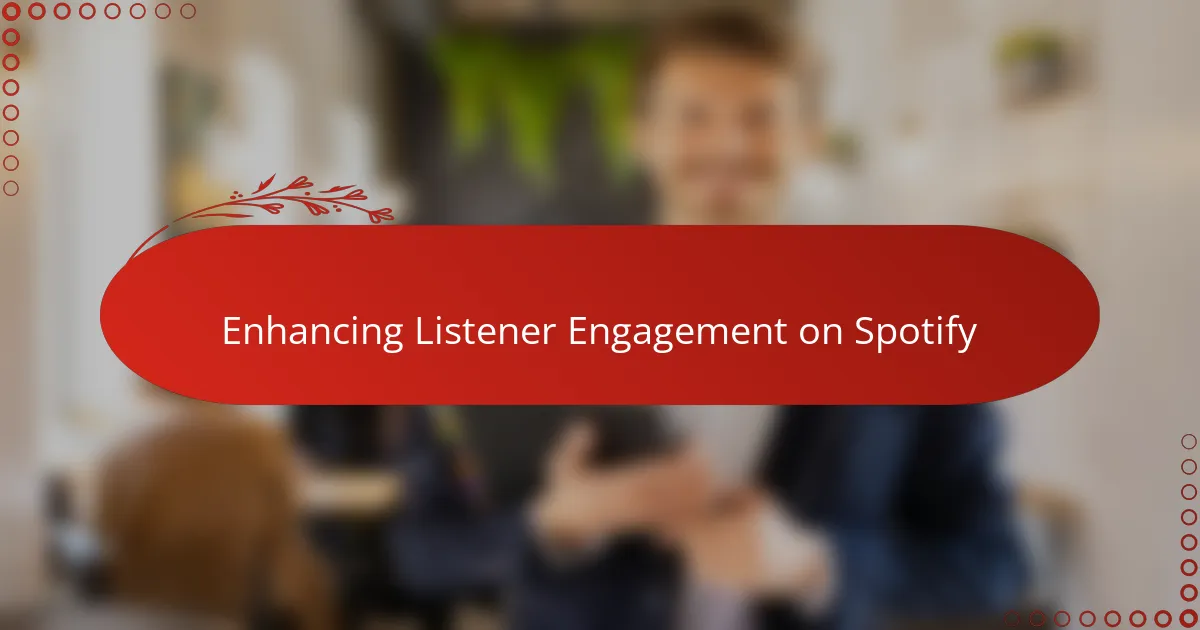
Enhancing Listener Engagement on Spotify
What truly transformed my experience on Spotify was realizing how interactive listener engagement could be. Instead of simply playing tracks, I started incorporating features like Spotify’s Storyline and Canvas visuals, which added a new layer of connection. Have you noticed how a short looping video or behind-the-scenes tidbit instantly makes a song feel more personal? For me, these small touches deepened the bond with my audience in ways traditional radio rarely achieves.
Another powerful tool I discovered was the use of polls and Q&A sessions embedded in playlists. Inviting listeners to weigh in on song choices or share their stories created a lively back-and-forth, almost like a live conversation. I remember one moment when a listener’s comment sparked a spontaneous theme for the next broadcast—talk about feeling connected! It reminded me that engagement isn’t just about numbers; it’s about creating a community that listens and responds.
Beyond the tech, what struck me most is how Spotify encourages me to be authentic and responsive. When I track listener habits through Spotify for Artists, I adjust my playlists not based on guesswork but real feedback. This dynamic kept me motivated to evolve and personalize content continuously. Isn’t that what true engagement is all about—listening just as much as broadcasting?

My Personal Experience with Spotify Radio
Using Spotify Radio felt like stepping into a new world of audio connection. I recall the first time I tuned into a personalized station—it was as if the music understood my mood better than I did. Have you ever experienced that moment when a song plays at just the right time, making you feel instantly connected? That’s the magic Spotify brought to my broadcast.
One particular moment stands out when a listener messaged me, saying how a Spotify radio mix I curated brightened their long night shift. It was humbling to realize that these algorithm-driven playlists could still carry a human touch strong enough to comfort someone miles away. That sense of creating a shared space, even digitally, made me appreciate Spotify’s role in modern radio broadcasting.
What really surprised me was how effortless it became to blend my voice and curation with Spotify’s technology. Instead of wrestling with complex setups, I found myself focusing on storytelling and mood crafting. Have you thought about how this ease allows broadcasters to experiment more freely? For me, Spotify Radio isn’t just a tool—it’s a creative companion in building meaningful audience moments.
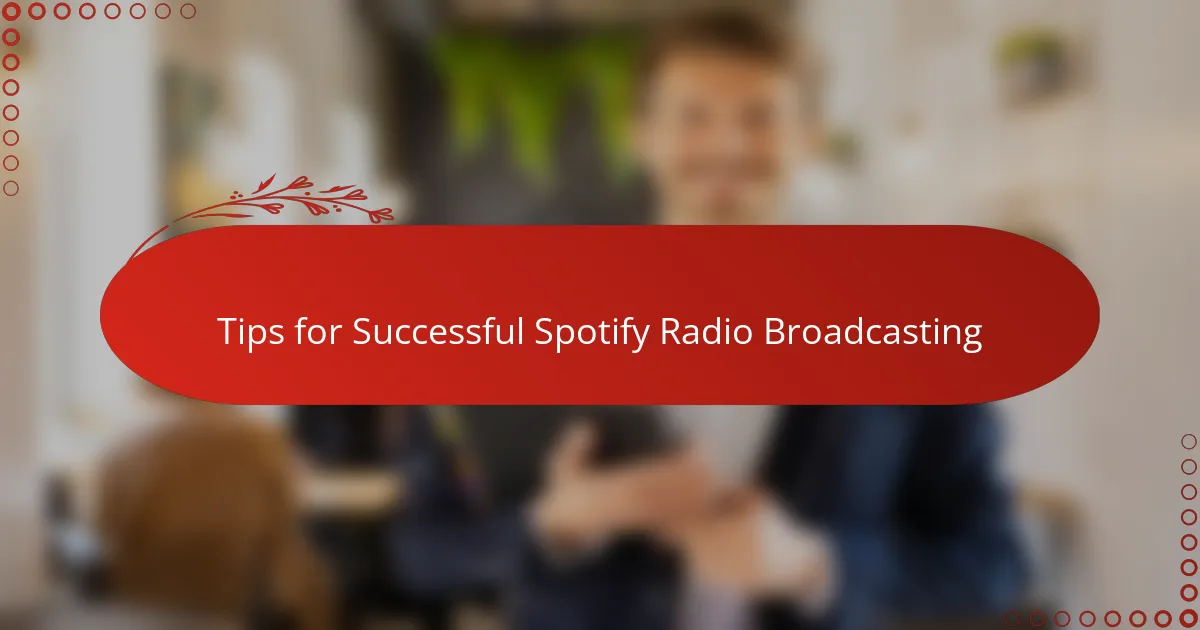
Tips for Successful Spotify Radio Broadcasting
When I started broadcasting on Spotify, one tip that quickly became clear was the importance of curating playlists with intention. Have you ever noticed how a well-thought-out sequence of songs can tell a story or set a mood that keeps listeners glued? I found that treating each playlist like a mini radio show helped me hold my audience’s attention longer and create a more immersive experience.
Another key aspect is embracing Spotify’s data tools without losing your human touch. It’s tempting to rely solely on numbers, but I believe blending analytics with intuition makes broadcasts feel authentic and spontaneous. For example, after noticing my listeners gravitated toward certain genres, I adjusted my playlists—but I also made room for unexpected tracks to keep things fresh and exciting.
Lastly, interacting with your audience whenever possible transformed my broadcasting approach. Asking real questions, inviting song requests, or even encouraging collaborative playlists made listeners feel like co-creators rather than passive listeners. Isn’t that connection what vibrant radio is all about? In my experience, these small gestures foster loyalty and turn casual streams into genuine communities.
